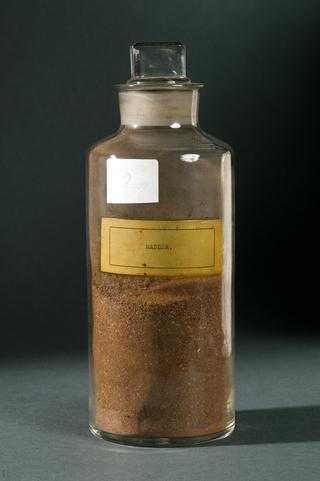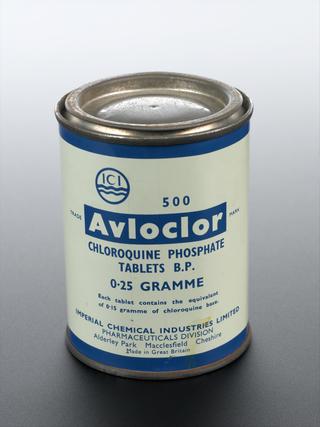
Pears' Blanc de Perle.
- Made:
- circa 1890
- maker:
- A and F Pears Limited




Pears' Blanc de Perle
‘Blanc De Perle’, which translates to ‘pearl white’, is a cosmetic product made by the cosmetic company Pears, that was marketed towards everyday women and as theatrical make-up in the late 1800s and early 1900s. It was applied to the face similarly to modern foundation products and was advertised as “imparting a delicate and permanent whiteness to face, neck and arms”.
Skin whitening has a long history, used since antiquity. Face whitening cream containing toxic substances like arsenic and lead became popular in early modern Europe. One of the most famous faces associated with a pale, white complexion being Queen Elizabeth I.
Toxic cosmetic ingredients had adverse health effects for its many users, in some cases leading to death. The 19th and 20th centuries brought much greater health regulation in cosmetics.
Among the ingredients contained in Pears’ Blanc de Perle is ‘bismuth oxychloride’, a powder popular for the iridescence caused by its reflectivity. It has been used as a cosmetic pigment as far back as in Ancient Egypt, and it is still used today as a safety-approved filler for cosmetics. However, in higher concentrations the powder’s crystalline structure can cause irritation and block pores.
Throughout history, whitening products have contributed to the idealisation of a pale complexion. Pale skin was associated with wealth, as it demonstrated you did not need to undertake manual labour outside. These associations - along with a perception that whiter skin was necessary to gain opportunities and achieve success - were spread across the globe with colonisation.
This outlook is rooted in racist ideas about skin colour and social hierarchy, which still persist in the 21st century. For example, in a 2018 study at New Delhi university, India called ‘Skin colour-bias in Arranged Indian Marriages’, participants were asked to rank potential partners for their children. It was concluded that ‘fair-skinned highly attractive people received higher ratings than dark-skinned highly attractive people’, suggesting a bias towards lighter skin.
This specific product is no longer sold, but Pears’ products are still manufactured under the umbrella company of Unilever, with their modern product range consisting of soaps and body wash. However, the product name Blanc De Perle is still used in the cosmetics industry by some companies.




